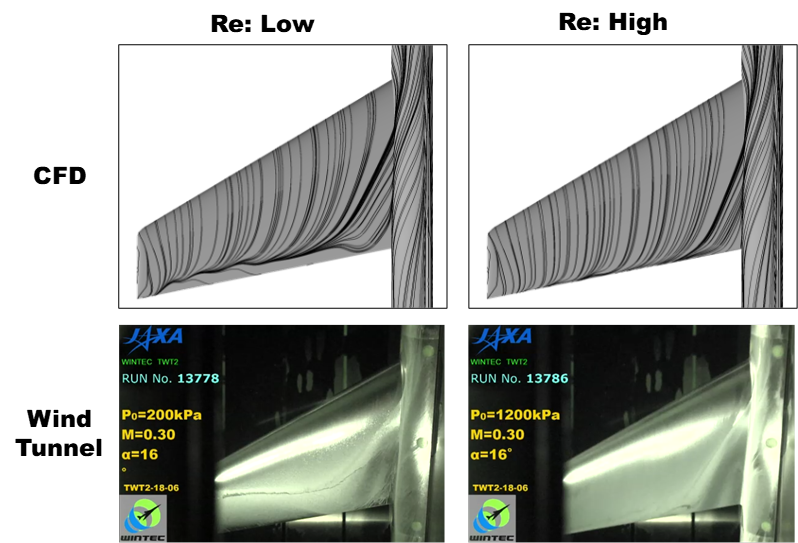Innovation for Design, Data-acquisition, Trouble-shoot and Certification in Aircraft Development: Acceleration and accuracy improvement of aerodynamic modeling
JAXA Supercomputer System Annual Report April 2018-March 2019
Report Number: R18EDA101A01
Subject Category: Aeronautical Technology
- Responsible Representative: Shigeru Hamamoto, Aeronautical Technology Directorate, Aerodynamics Research Unit
- Contact Information: Kazuyuki Nakakita, Aeronautical Technology Directorate, Aerodynamics Research Unit(nakakita@chofu.jaxa.jp)
- Members: Kazuyuki Nakakita, Hiroya Toriida, Hiroshi Kato, Hajime Miki
Abstract
The Aerodynamic Prediction Technology, which is a part of the Innovation for Design, Data-acquisition, Trouble-shoot and Certification in Aircraft Development, constructs the assist technologies to accelerate domestic aircraft development sequences using basic aerodynamic technologies. The target of the Aerodynamic Prediction Technology is paradigm shift from artisanal prediction to analytical one to accelerate domestic aircraft development sequences. This study aimes to improving a prediction accuracy of flow separation in a flight Reynolds number. Turbulance models for RANS simulation were modified to fit to experimental results from a high Reynold number wind tunnel by utilizing a data assimilation techniquie.
Reference URL
N/A
Reasons for using JSS2
The use of JSS2 was necessary for conducting a lot of CFD simulations in a short period for refining a shape of wind tunnel model and performing the data assimilation.
Achievements of the Year
A CFD parametric study on wing shape was conducted for selecting a wind tunnel model configuration, which had a simple and sensitive Reynolds number dependence on its trailing edge separation. The simulation data were utilized for the wind tunnel test model design. The wind tunnel experiment was produced good data with the Reynolds number dependence as expected by CFD predictions (Fig.1).
Publications
– Oral Presentations
Hajime Miki and Kazuyuki Nakakita, “Wind Tunnel Test Plan and Preliminary Experiment for Acquiring Characteristics of Flow Separation in High Reynolds Number Regimes”, 50th Fluid Dynamics Conference, 3E08, 2018. (in Japanese)
Usage of JSS2
Computational Information
- Process Parallelization Methods: MPI
- Thread Parallelization Methods: N/A
- Number of Processes: 32 – 512
- Elapsed Time per Case: 20000 Second(s)
Resources Used
Fraction of Usage in Total Resources*1(%): 0.06
Details
Please refer to System Configuration of JSS2 for the system configuration and major specifications of JSS2.
| System Name | Amount of Core Time(core x hours) | Fraction of Usage*2(%) |
|---|---|---|
| SORA-MA | 546,089.72 | 0.07 |
| SORA-PP | 772.97 | 0.01 |
| SORA-LM | 0.00 | 0.00 |
| SORA-TPP | 0.00 | 0.00 |
| File System Name | Storage Assigned(GiB) | Fraction of Usage*2(%) |
|---|---|---|
| /home | 13.60 | 0.01 |
| /data | 3,580.05 | 0.06 |
| /ltmp | 1,483.45 | 0.13 |
| Archiver Name | Storage Used(TiB) | Fraction of Usage*2(%) |
|---|---|---|
| J-SPACE | 0.00 | 0.00 |
*1: Fraction of Usage in Total Resources: Weighted average of three resource types (Computing, File System, and Archiver).
*2: Fraction of Usage:Percentage of usage relative to each resource used in one year.
JAXA Supercomputer System Annual Report April 2018-March 2019



